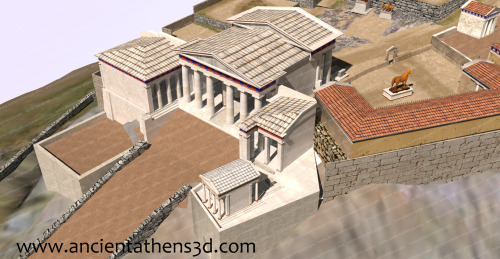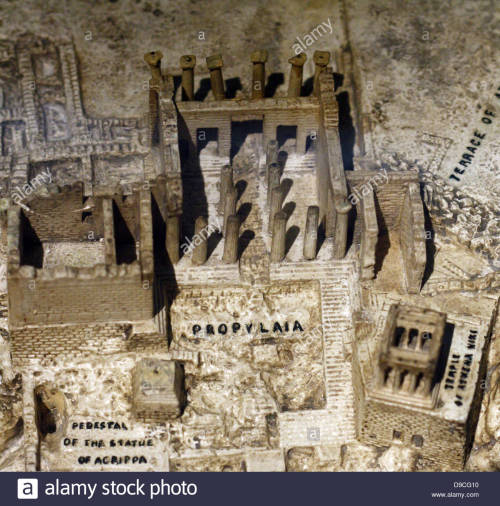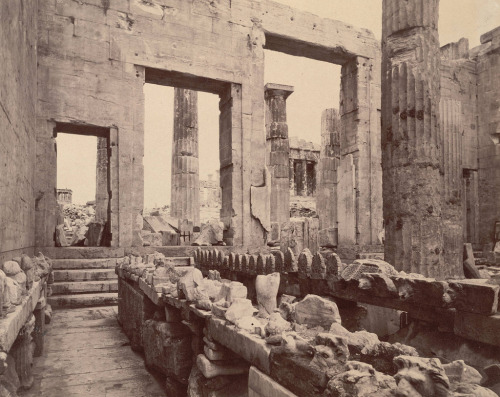classicalmonuments:Propylaea of Athens AcropolisAthens, Greece432 BCEThe monumental gateway to the A
classicalmonuments:Propylaea of Athens AcropolisAthens, Greece432 BCEThe monumental gateway to the Acropolis, the Propylaea was built under the general direction of the Athenian leader Pericles, but Phidias was given the responsibility for planning the rebuilding of the Acropolis as a whole at the conclusion of the Persian Wars. According to Plutarch, the Propylaea was designed by the architect Mnesicles, but we know nothing more about him. Construction began in 437 BC and was terminated in 432, when the building was still unfinished. The Propylaea was constructed of white Pentelic marble and gray Eleusinian marble or limestone, which was used only for accents. The structure consists of a central building with two adjoining wings on the west (outer) side, one to the north and one to the south. The core is the central building, which presents a standard six-columned Doric façade both on the West to those entering the Acropolis and on the east to those departing. The columns echo the proportions (not the size) of the columns of the Parthenon. There is no surviving evidence for sculpture in the pediments. The central building contains the gate wall, about two-thirds of the way through it. There are five gates in the wall, one for the central passageway, which was not paved and lay along the natural level of the ground, and two on either side at the level of the building’s eastern porch, five steps up from the level of the western porch. The central passageway was the culmination of the Sacred Way, which led to the Acropolis from Eleusis. Entrance into the Acropolis was controlled by the Propylaea. Though it was not built as a fortified structure, it was important that people not ritually clean be denied access to the sanctuary. In addition, runaway slaves and other miscreants could not be permitted into the sanctuary where they could claim the protection of the gods. The state treasury was also kept on the Acropolis, making its security important.The gate wall and the eastern (inner) portion of the building sit at a level five steps above the western portion, and the roof of the central building rose on the same line. The ceiling in the eastern part of the central building was famous in antiquity, having been called by Pausanias (about 600 years after the building was finished) “…down to the present day unrivaled.” It consisted of marble blocks carved in the shape of ceiling coffers and painted blue with gold stars. -- source link









